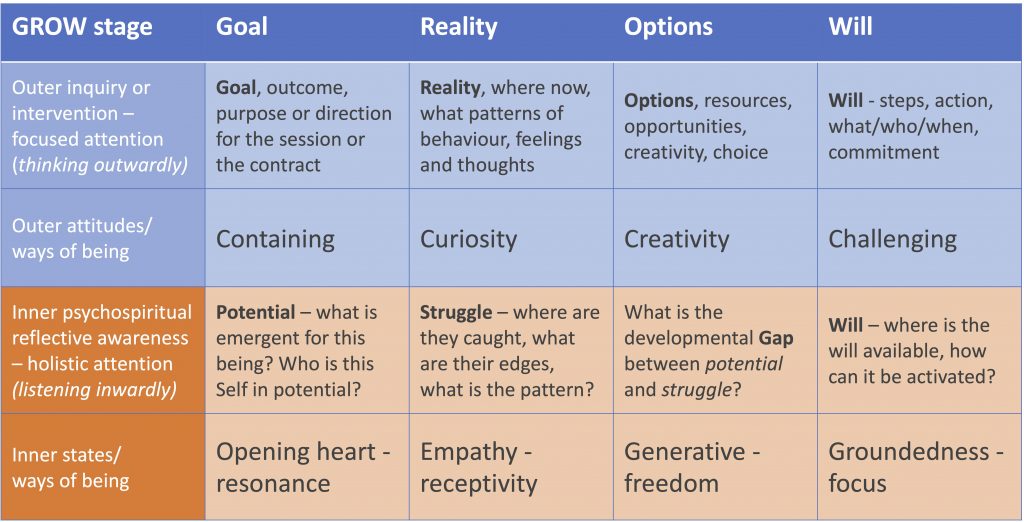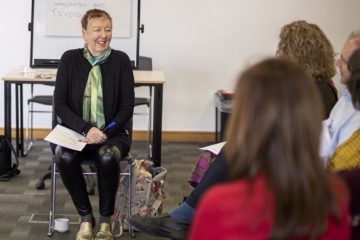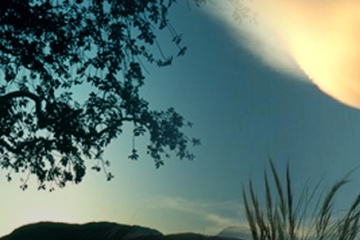The evolution of coaching (Part Five) – shifting ways of being in coaching
Ways of being and becoming
In this final article in my series exploring the way the coaching profession is evolving, I want to draw upon the work of Iain McGilchrist, whose bestseller ‘The Master and his Emissary’ and his more recent ‘The Matter with Things’ I am currently reading. These are remarkable, fascinating and controversial works which I will review and engage with more fully elsewhere, but already they have given me some valuable new perspectives which I want to apply here to coaching. Over recent years I have been alert to discoveries from the neurosciences and with McGilchrist’s work more than any other, I feel I am encountering something genuinely new that directly connects with the psychospiritual perspective and experientially grounded work we engage in with psychosynthesis coaching. It speaks to a new synthesis of being and becoming for both coach and coachee, potentially transforming our experience of the coaching space, evoking a new expression of relational movement and flow.
The Master and His Emissary
In the Master and His Emissary, McGilchrist sets out to correct our over-simplified pop-view of brain hemisphere difference by drawing upon the latest neuro-scientific evidence and then shows how the structure of the brain has shaped the evolution of western thought and culture. He works towards a hypothesis that the perilous state of western society today is a reflection of the over-dominance of the left-brain hemisphere which has fallen out of healthy relationship with the right-brain. Hence we live in a world where the Emissary (parts analysing, detail and content oriented left-brain) is usurping the Master (the sensory, holistic, systemic, contextualising and meaning giving right-brain) and in which “reductionism has become a disease, a viewpoint lacking both intellectual and emotional depth, which is blighting our ability to understand what is happening and what we need to do about it”.
He starts by re-orienting how we should look at brain hemisphere difference, from function to ways of being, from what the brain does to how it does it. He stresses that both parts are involved in everything we think or do, but in different ways: “my thesis is that for us as human beings there are two fundamentally opposed realities, two different modes of experience: that each is of ultimate importance in bringing about the recognisably human world.” By ‘how’ he means “the manner in which” or “ways of being”, something only living things, as opposed to machines, can have. He describes (McGilchrist, 2018) these two ways of being as:
One is… to allow things to be present to us in all their embodied particularity, with all their changeability and impermanence, and their interconnectedness, as part of a whole which is forever in flux.
Th(is) right hemisphere pays attention to the Other, whatever it is that exists apart from ourselves, with which it sees itself in profound relation. It is deeply attracted to and given life by the relationship, the betweenness that exists with this other.
The other is… to step outside the flow of experience in a special way: to re-present the world in a form that is less truthful, but apparently clearer, and therefore cast in a form which is more useful for manipulation of the world and one another. This world is explicit, abstracted, compartmentalised, fragmented, static.
Th(is) left hemisphere pays attention to the virtual world it has created which is.. ultimately disconnected from the Other, making it powerful, but ultimately only able to operate on, and to know, itself.
Below I have summarised some other key differences McGilchrist highlights in terms of attention, focus, prehension, presentation and orientation:
| The left hemisphere | Right hemisphere |
| Nature of attention: narrow beam, highly focused attention
Focus on the parts that make up a whole Apprehends with a view to manipulation of the world Re-presents the world in order to be able to control or manipulate it Content oriented |
Nature of attention: broad, sustained vigilance
Focus on the whole or Gestalt Comprehends to understand the world Present to the world as it is – as experienced through the senses Context oriented |
To repeat (as McGilchrist frequently does!), both hemispheres are involved in everything the brain does, but in different ways, so it is not a matter of what but how that is different. They pay different types of attention to the world, and the type of attention we bring shapes the world. From ‘The Matter with Things’ (McGilchrist, 2021):
Each hemisphere is involved with ‘processing’ language, reason, music, emotion, imagery, morality, the self and much else besides. This could lead, and has led, people to say that there is no difference between the hemispheres. But each is involved with all these areas in a consistent and consistently different way.
This work in context
It is refreshing to read the work of a psychiatrist and scientist who recognises that spiritual experience and the depths of consciousness cannot be reduced to external matter. In the Matter with Things McGilchrist is working towards a theory of how consciousness and matter are two aspects of the same essential reality. Part of this narrative is about how we can shift from seeing ourselves and everything in the world as discreet things or separate entities, to seeing relationship and interconnection, movement and flow.
McGilchrist is enormously widely read and references vast libraries in his works but in ways which are curiously selective and this makes me wonder why he has avoided what would seem like essential topics for his landscape, for example transpersonal psychology, developmental psychology and the evolution of consciousness.
Ironically, he acknowledges the blinkeredness of many scientists and apologises for stepping into other people’s territory without full understanding. He frequently identifies and addresses the problems of scientific materialism and reductionism and for this too he must be applauded.
However, there are also significant problems for me with McGilchrist’s masterwork, mostly concerning the theory he is seeking to build about human society and the state humanity now finds itself in. When I have finished reading The Matter with Things, I will engage with these problems as I see them and seek to build a new synthesis between his work and other areas of theoretical development, with a view to creating a platform for exploring meaningful ways forward.
For now I simply want to draw upon my understanding of his key messages about brain hemispheres and ways of being, and explore how this can help us think differently about coaching.
Brain hemispheres and coaching
I believe this new understanding of how the brain hemispheres work together, e.g. the interplay between content and context, parts and wholes, deconstruction and meaning making, has something important to offer the way we think about the practice of coaching.
In very simple terms, the hypothesis I am formulating runs like this:
Coaching works best when we use both hemispheres of the brain in an optimal way that reflects dynamic relationship, movement and flow between the perspectives, ways of being and ways of attending to the world that characterise the two hemispheres.
The modelling of these ways of being and working by the coach both shape the coaching space and provide a role model for the coachee to explore their ways of being.
The dominant coaching paradigms (e.g. behavioural change and performance) tend to over-favour the left hemisphere to the neglect of the right hemisphere. Conventional coaching tends to focus on parts rather than the wholes, on breaking down situations, finding solutions and implementing change.
Rather than thinking in terms of coaching mindsets and working primarily at a cognitive level, it is more useful to think in terms of ways of being and attending to what is in the coaching space that draws upon our whole embodied sensory experience and self-awareness of our psyche in relationship with Self, Other and System. Attending to our experience and way of being in this way is key to developing a more holistic approach to coaching. Such holistic coaching offers a context and a way working that more fully reflects the way that both hemispheres work and emphasises the relational and flow aspects.
A model of holistic coaching
Before coming across McGilchrist’s work, I recently developed a model of holistic coaching which identifies and describes these two ways of being and attending to the world in relationship to the coaching process. These can also be seen as describing the left and right hemisphere perspectives that are both needed to work with the whole person, to honour the being and becoming of coaching. The model is an expansion of the popular GROW model, although it could have been developed around any coaching process model. Here it is in brief:

What are we saying here that’s important?
First that coaching has tended to emphasise and prioritise the top/left hemisphere part of this model to the exclusion or neglect of the bottom/right hemisphere part. This can result in coaching becoming narrow, reductive or dehumanising, even if unintended.
Second, it gives guidance to the coach as to how they might engage more of the right brain hemisphere in their coaching, in different ways as the process or flow of the coaching conversation progresses. In particular, opening the heart as the resonator of Self is a practice which can directly support the coach to be more present to what is and to engage at the level of being.
Third, it sets out a foundational framework for reflecting upon coaching as a process of engaging both pathways or ways of attending to the coachee and the coaching space and that how we do this is fundamental to what we are learning about as we develop as coaches.
McGilchrist’s presentation of brain hemispheres difference seems to line up with many of the distinctions we make in psychosynthesis coaching: between working with both the being and doing of leadership; being wholly present to now and inquiring into the current reality; opening to the gestalt and breaking it down into parts; between attending to the inner and the outer worlds for both ourselves and the coachee. In these and in so many more ways in which we draw upon Roberto Assagioli’s psychosynthesis (see Howard, 2022) to engage the principles of polarity and synthesis in human consciousness – this seems more than coincidence. Some other examples of these polarities that we work with (which I will explore more in my next series of posts) are:
- Abstract and concrete mind
- Self and subpersonalities
- Flow and granularity
- Above and below
By comprehending and apprehending how the brain might in some way shape or reflect how our minds are always working, we are adding something fundamental to our understanding and practice. I am not yet sure what this is or how to describe it fully, but something is already shifting in my own awareness of how I engage both hemispheres in my ways of being, since I started researching and writing this piece.
How do we work with both the whole and the parts? How do we hold the context whilst engaging with the content of what the coachee brings? How do we stay present to what is and enable the coachee to do the same, and at the same time representing and simplifying complexity to support the coachee in taking steps towards enacting their will in the world? It seems to me that holistic coaching is a perfect practice for seeking right relationship between the brain hemispheres in ways that can redress the unconscious biases of the western modern world.
What is new
What is new here? As with so many realisations, we are learning a new way to arrange things we already knew. McGilchrist’s work on the brain hemisphere’s, particularly the way he describes ways of being and attending to the world, gives us a language and way of seeing the world that can speak directly to coaching and enable insight into the way our brains are working in real time. This is early days for applying this new theory, but I hope it will be as useful to you as it is becoming for me.
Using the language of ways of being has clicked something into place for me about why some people have difficulty engaging with a psychospiritual perspective in general and with what Roger Evans (Firman, 2018) calls Trifocal Vision, in particular. Engaging Trifocal Vision in coaching primarily involves attending to our present experience using our right brain hemisphere to hold a series of gestalts or wholes – as we seek to perceive the Being or Self of the other, the struggle of where they are now, the big developmental gap and the small gap of where there is available will. Problems occur when we try to hold Trifocal Vision using the left brain and don’t see the whole. But we also need to engage our left brain alongside this to perceive and represent the parts of the whole, to see the blocks, options and steps forward. That is why I have drawn the model with the blue/outer/left and orange/inner/right levels in parallel because we need to engage with both in coaching alongside each other. In this model they both come together with the Will – which we simultaneously perceive as a whole (e.g. as the Transpersonal Will of the Self) and at the same time recognise and represent the aspects and qualities involved and inquire into the steps needed for the coachee to activate and experience their will.
There is a natural and continuous movement between the two sides of our brains – between our intuitive perception of the whole to an inquiry into the parts and then a return to meaning making by engaging our capacity to see the whole again. The inquiry into the parts in coaching can be about the parts of the coachees purpose, goal or desired outcome, the parts of their story or dynamics of the situation, the patterns, blocks or edges the coachee is encountering, the options and resources available and the possible actions or steps they might take. With psychosynthesis coaching it can also be the parts of the coachees experience and their inner world, the parts of the psyche or personality including subpersonalities, and the parts of the Will and the psychological functions, for example.
Where next
As well as understanding how this brain hemisphere dichotomy/polarity/asymmetry relates to the principles of polarity and synthesis within individual and collective human consciousness, I will be extending this exploration more generally to what we already know from psychosynthesis about consciousness, the psyche, the psychological functions (especially intuition and imagination) and the will.
The language and landscape of ways of being and attending to the world is also connecting to what I am learning from the fields of neurobiology, embodiment, somatic and trauma work, drawing upon the work of Stephen Porges, Peter Levine, Gabor Mate and many others. I am behind the game on this and when I have caught up I will write about this too.
I believe that we are entering a period of not just profound change and realignment in the outer world but a rich and powerful time of emergence in the noosphere and world of ideas, perhaps akin to the enlightenment or renaissance periods. We are engaged in a fascinating race against time to connect with, dialogue about and bring these ideas into practice in ways which can impact and transform the nature of that change in the world.
This summer I have immersed myself in videos and podcasts via a web platform called Rebel Wisdom which engages with new ideas and thinkers with a view to making sense of what is happening in the world. I will be saying more about this in my next series of posts: Sensemaking and Psychosynthesis.
To find out more about psychosynthesis and our coaching accreditation pathways, please come to one of our online Taster Saturday events, hosted by Anne Welsh.
References
Evans, Roger (2020), Five Dimensions of Leadership, Hendon: Creative Leadership Publishing
Firman, Dorothy (Ed) (2018), ‘The Call of Self’
Howard, Aubyn (2020), Psychosynthesis Leadership Coaching, Abingdon: Routledge
Howard, Aubyn (2022), Working towards synthesis: context, guidance and techniques for engaging with polarisation. Chapter 21 in Nocelli, Petra Guggisberg (2022) Know, Love, Transform Yourself. Theory, techniques and new developments in Psychosynthesis, Vol. II, Psychosynthesis Books
McGilchist, Iain (2009) The Master and His Emissary: The Divided Brain and the Making of the Western World, Yale University Press
McGilchist, Iain (2021) The Matter with Things, Perspectiva Press, London. Kindle version.
Rebel Wisdom: https://rebelwisdom.co.uk



